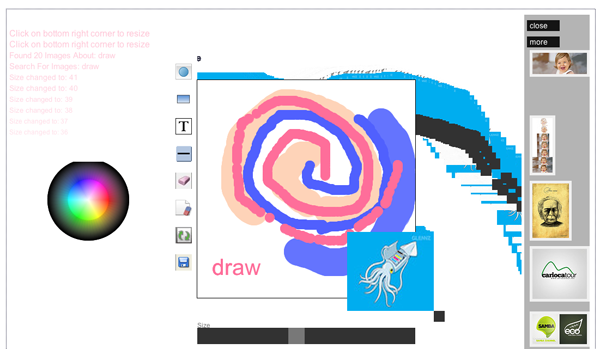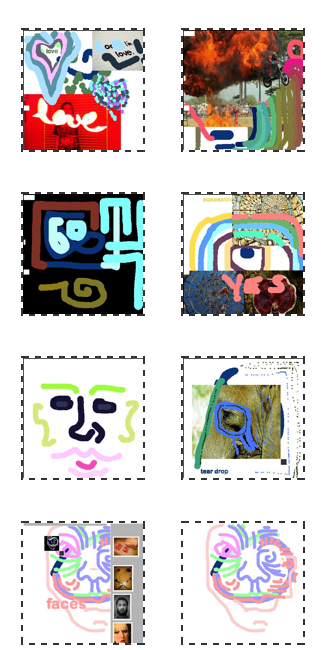WeLike2Draw
Samwell Freeman, Computer Science
Faculty Advisor: Ioannis Stamos
Welike2draw is a suite of open-source hardware and software built to facilitate creativity and collaboration on digital devices. The software allows participants to share drawings over the internet, working simultaneously in real time and integrating rich media into their works. The hardware consists of custom devices with a wide range of sensors offering novel modes of interaction with computers. These devices hope to honor our bodies capability of dexterous and rhythmic movements, freeing us from the need to sit at a computer and inviting us to dance shake and wiggle with our machines.
Welike2draw is at once a web and mobile phone application and a set of physical computing tools built to help people draw. For many drawing is an integral part of the creative process. It is a liberating medium requiring just a surface and a mark maker. Inventors, artists, scientists, architects all use drawing as a sort of breeding ground where ideas are born, developed, and transformed.
The welike2draw software hopes to leverage the power of the web to open the generative process of drawing up to virtual collaborations and integration with rich media. Using a client server architecture participants may share a drawing board over the web. Clients can access the drawing board from their web browsers or from their mobile phones. People can begin new drawings, invite friends to draw with them, watch others collaborate, and save their work for future reference or editing. Artists may also query the web for images and place them on their canvas. Once on the canvas the images can be scaled, drawn over, and modified.
The welike2draw hardware hopes to interpret a wide range of movements and gestures as input to the drawing program and to computers in general. To this end, we employ a wide range of sensors including accelerometers, tilt switches, force-sensitive resistors, touch screens, potentiometers, and more. With these novel devices we invite users to get up from their hunched position at their desks, and dance shake and wiggle their intentions onto the screen in a way that the current interfaces of mouse and keyboard could never allow.

